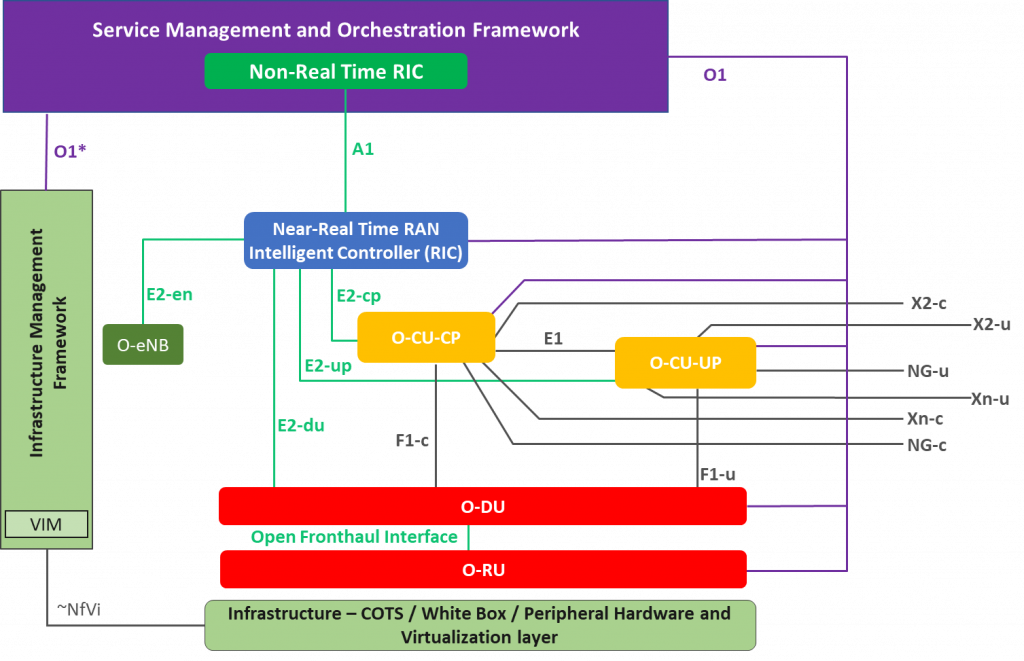Open RAN is a highly disruptive technology that will bring many benefits to Mobile Network Operators (MNOs), especially during the evolution to 5G.
By opening up the RAN to multiple vendors and virtualizing the software, costs will be significantly reduced, highly dynamic services will be enabled, and the RAN domain will experience far greater levels of innovation.
Open vRAN will introduce many technologies and architecture changes, however, these benefits can only be achieved with a new OSS/orchestration environment that brings automation and agility to the RAN as per NEC:
- Highly distributed RAN architecture: By virtualizing the RAN software (eNB) and further disaggregating the eNB into near and far edge locations, the RAN becomes highly distributed. OSS/orchestration systems need to intelligently place resources at the optimal location and provide end-to-end assurance.
- Dynamic cloud/virtual resources: Open vRAN will comprise physical, virtual (VNFs) and cloud-native functions (CNFs) that need xNF OSS/orchestration to automate design, deployment, and lifecycle management events such as scaling, healing, and upgrades.
- Multivendor: By opening up the RAN, Operators will work with more vendors than before and opt for a best-of-breed approach. OSS/orchestration systems need to use open APIs, standards, and DevOps tools to simplify onboarding, interoperability, and continuous upgrades and optimize costs.
- Evolution to 5G: Open vRAN OSS/orchestration will need to accommodate both 4G and 5G and enable a smooth evolution to 5G that extends to the RUs, gNBs, RAN sharing, and the ability to support dynamic network slicing.
Non Real-Time RAN Intelligent Controller (RIC non-RT)
Goal: The goals of RIC non-RT are
- Support non-real-time intelligent radio resource management, higher layer procedure optimization, policy optimization in RAN.
- Providing guidance, parameters, policies, and AI/ML models to support the operation of RIC near-RT to achieve higher-level non-real-time objectives.
- RIC non-RT functions include service and policy management, RAN analytics, and model training for the RIC
near-RT functionality.

Use Case:
With the amount of L1/L2/L3 data collected from eNB/gNB (including CU/DU), useful data features and models can be learned or abstracted to empower intelligent management and control in RAN.
For example, network traffic patterns, user mobility patterns, service type/patterns along with the corresponding prediction models, network quality of service (QoS) prediction patterns, massive MIMO parameters configuration, and more can be reused, abstracted, or learned.
This information can then be combined with additional network-wide context and policies to drive fine-grained near real-time network radio resource management in the RIC nearRT and non-real-time optimization within RIC non-RT.
Analytics, intents, and policies defined for the RIC non-RT in many cases will need to be mapped to sub-policies, actions, parameter changes, analytics/learning tasks, etc.
